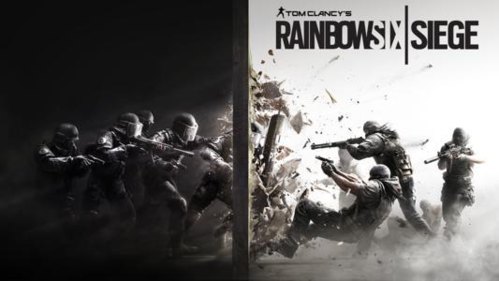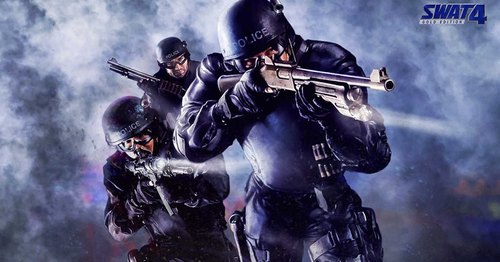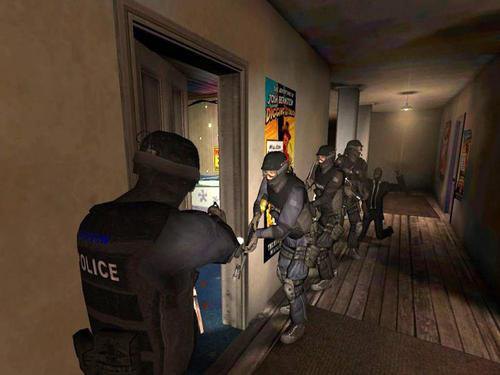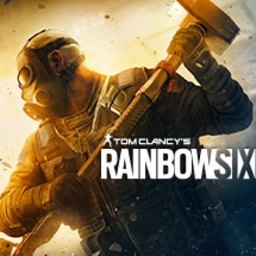When it comes to tactical shooting games, the first thing that springs to many people’s minds is the famous Tom Clancy’s Rainbow Six series, and the latest work Rainbow Six: Siege makes the whole series well-known. The Rainbow Six series brings a uniqueness to the shooter genre that has been so saturated in the current video game market . In today’s article we will introduce two very excellent tactical shooting games to you that stand out even in such an overcrowded genre.
The first game on our list is Rainbow Six: Siege which follows Ubisoft Entertainment's IP Tom Clancy's Rainbow Six series. Based on the character setting in the novel of the same name. The characters in the game come from counter-terrorism forces from all over the world, all working together to face a common enemy. The characteristics of each team member are very clearly portrayed. Different characters use different skills, the equipment available to each character helps maximise the effectiveness of these skills. The firearms available are also unique to each unit based on the police force they are a part of.

Each match is incredibly tense as players battle in a 5v5 format taking turns to play offense and defense.
The maps of Rainbow Six: Siege are designed for CQB, simulating the situation in modern small-scale counter-terrorism operations. These small maps give players a sense of familiarity, adding to this, players have the ability to go prone or even lean to give themselves the best possible advantage against their enemies. The indoor maps have a large number of destructible walls, ceilings and other obstacles, which can be used according to tactical needs and used to win the game. Giving players many different ways to combat their foes based on their imagination.
Equipped with military drones, cameras and other gadgets used in modern counter-terrorism operations. Making full use of this equipment is essential for tactical cooperation and the core part of the gameplay. Players must select their characters before the start of each round. Different characters have different abilities and the key is to match the abilities of your teammates to achieve tactical goals.
There are three game modes, namely hostage mode,secure the area and bomb mode. The core of the three game modes is attack and defense.
Hostage mode - The attackers must confirm the location of the hostage, rescue them and finally escape with the hostage before the time limit is reached. On the other hand, the defenders must set up numerous traps and obstacles to prevent the attackers from rescuing the hostage. The preparation phase allows each team to plan their own tactics. In order to achieve victory, the attackers must destroy all enemies or successfully rescue the hostage, and the latter can earn the most points. However, the offensive team will lose the round if their team is completely destroyed, the hostage is shot by their own team, or if the hostage cannot be rescued within the time limit. However, if the defending team is completely destroyed, the hostage is successfully rescued, or the defending team accidentally shoots the hostage, the defending team will lose the round.
Guard mode - Attackers must locate the room with a biochemical weapon. Once found during the preparation phase, attackers must then enter the room with the weapon) and stay in the area for at least 10 consecutive seconds to win the round. Of course, the defenders must prevent the attackers from entering the room and guard it. As long as a defender is still in the area, the countdown will not start. Similarly, if a defender suddenly enters the room, the countdown will be reset, and the attacking team must eliminate all defenders (kill them or force them to leave) to restart the countdown. The most impressive feature of this mode is that the offensive and defensive roles will alternate frequently, and the difficulty will be related to the size of the room that must be captured.
Bomb mode - At least one of the two biochemical bombs must be prevented from detonating. During the preparation phase, the attacking team must pick up a demolition device (any attacker can pick it up) that will defuse one of the bombs. Confirm the location of the biochemical bomb and install the device near the bomb. Once the defuser is activated, it will take 45 seconds to defuse the bomb. The attackers can win by defusing one of the two bombs or destroying the enemy team. The defenders can choose where to place the bombs from multiple options at the beginning, and each bomb will be automatically placed in a different room, the defenders must prevent the attackers from setting up a defuser on either of the bombs.
The biggest difficulty comes from having to monitor the area where the two biochemical bombs are located at the same time. If a defuser is activated, the defenders must find it and turn it off. If the defenders can eliminate the attacking team before defusal has started they win, if the bomb has not been disarmed within the time limit the defenders win, and finally if defending team stops the defusal they also win, even if any members of the attacking team are alive.
Tom
The second game we will discuss is also a tactical FPS game. If you have some understanding of the history of the so-called counter-terrorism games, you will probably know Sierra's SWAT series. In fact, SWAT can almost be said to be the originator of this aspect, as early as 1995, when the first game in this series appeared. Although it was just a rough 2D shooting game at that time, it still laid the foundation for future SWAT sequels. The third game developed in 1999 combined the three elements of FPS, tactics, and realistic gameplay, and won wide acclaim from players and critics alike. SWAT 4 is made with a greatly improved "Unreal" engine, and the quality was improved from their previous title Tribes Vengeance. The game provides the traditional interface of "SWAT 3" however it has been hugely updated and improved. The game physics engine adopts the most widely used Havok engine, which expresses the physical characteristics of various objects very realistically.

In SWAT 4, the player can control 5 team members. As the captain, the player must use the correct tactics to command their team members, and at the same time distinguish the criminals from the civilians to avoid accidental injury.
SWAT 4 is developed using the Vengeance engine based on the Unreal Engine which gives you 16 different environments to explore. Players will be able to use the weapons and equipment used by real SWAT teams, such as Colt M-4 Carbines, Benelli M4 Super 90 shotguns and SureFire (tactical flashlight).

SWAT 4 also supports up to 16 players in PVP battles, and an up to 5-player cooperative mode. There are 14 single player levels in the game, all of which can be played in the multiplayer modes, and there are also three maps for multiplayer games only. Multiplayer modes include police vs. suspects, bomb mode, VIP mode, to name a few.
The most impressive feature of this game is to allow players to experience the dangers and difficulties encountered in the real and intense SWAT law enforcement process from a relatively hard-core and realistic perspective. This game not only tests the cooperation and trust of your teammates, but at the same time, you have to be good at using a variety of tactical props to control and locate the enemy. You can fire when necessary to eliminate threats, but it is not a simple matter of just seeing people. Your actions are scored according to your combat efficiency and time. Compared with the Rainbow Six series mentioned above, there is no doubt that SWAT 4 is more hard-core and realistic but still requires you to focus on the cooperation between the teams. The tactical gadgets are not as wild and imaginative as those in Rainbow Six Siege. This is not only because the game focuses on realism but the game development team’s respect and attention to SWAT. Some of the themes in SWAT 4 are much more mature than those in Rainbow Six Siege, even touching on themes such as cults and satanic rituals. In comparison, Rainbow Six Siege focuses on competitive and multiplayer entertainment. Acting more like a children's playhouse letting you use your imagination. So you can also choose a tactical shooting game that suits you according to your own preferences!
ADVERTISEMENT










